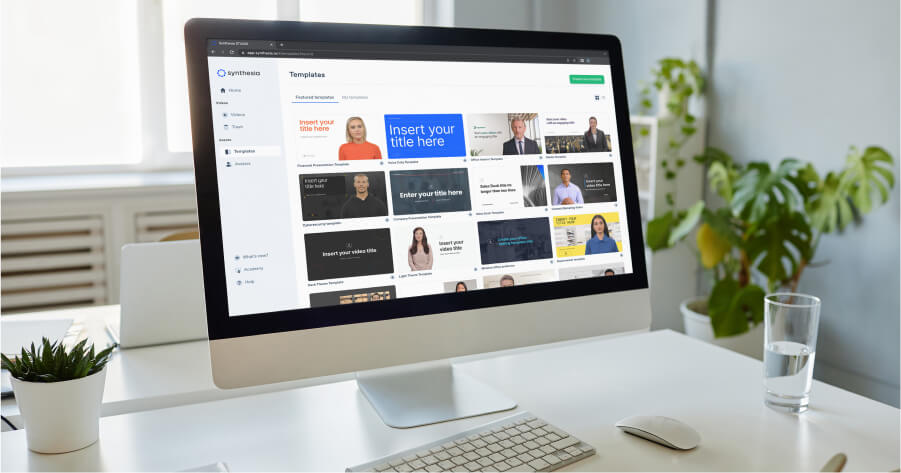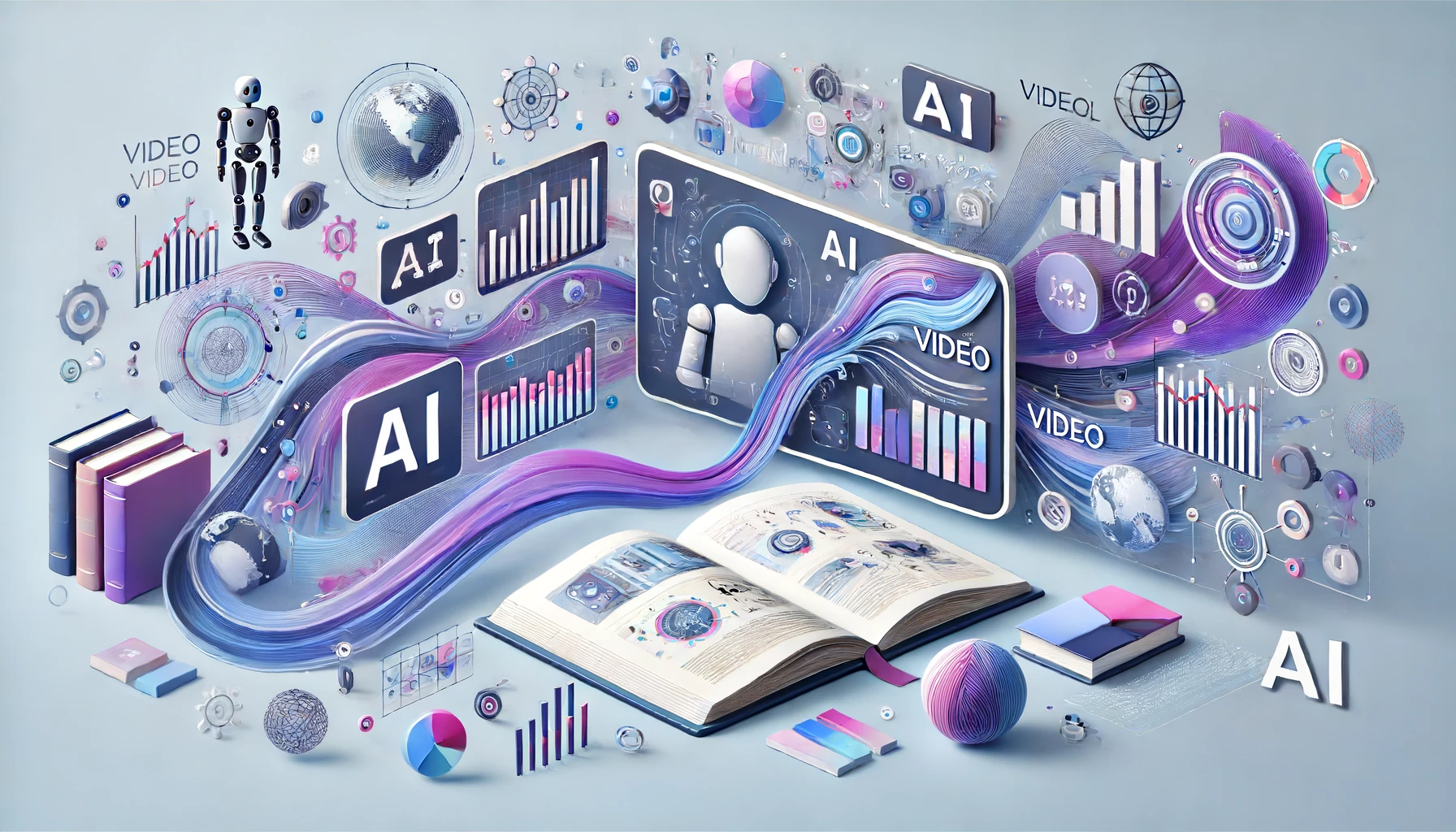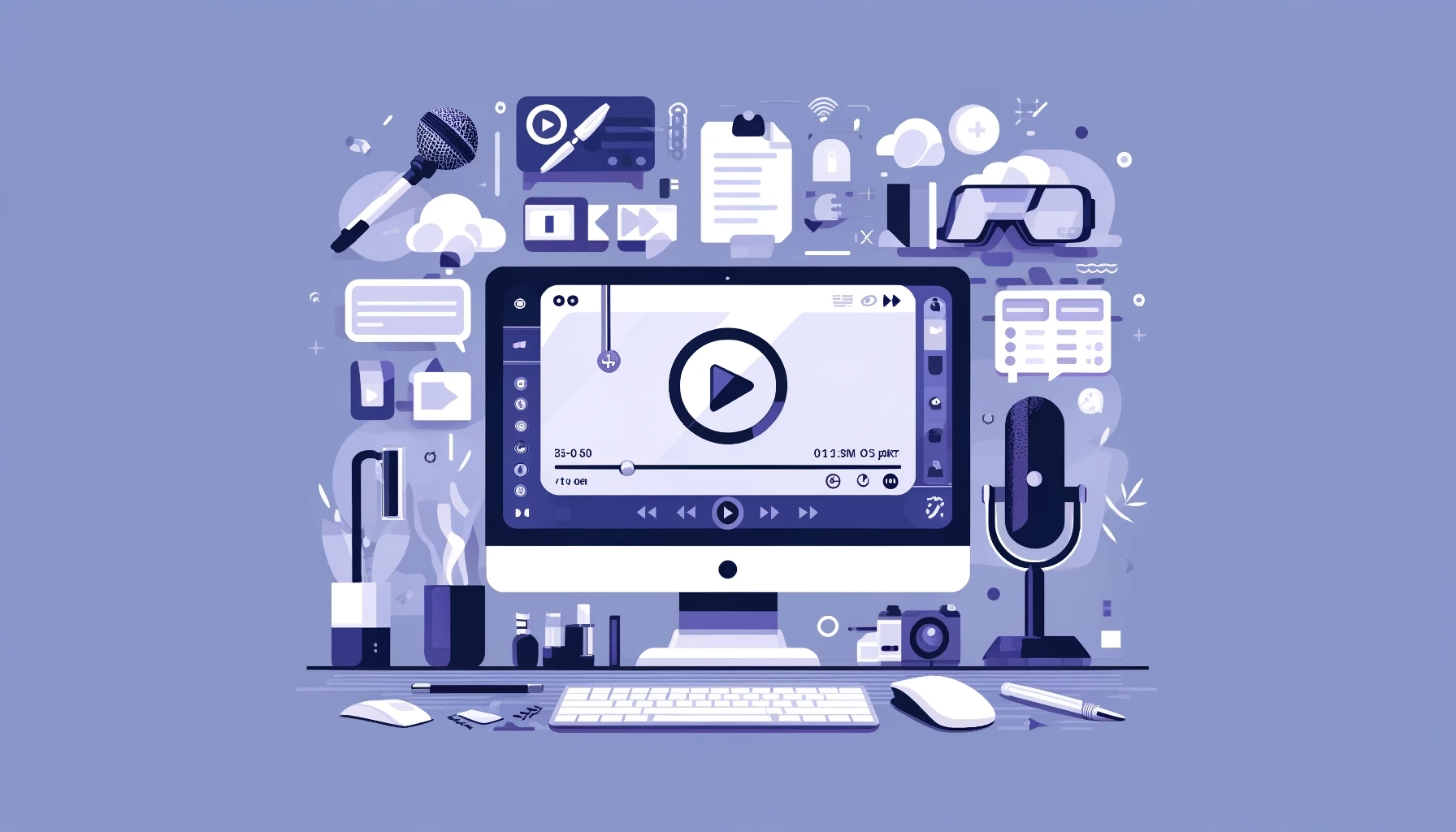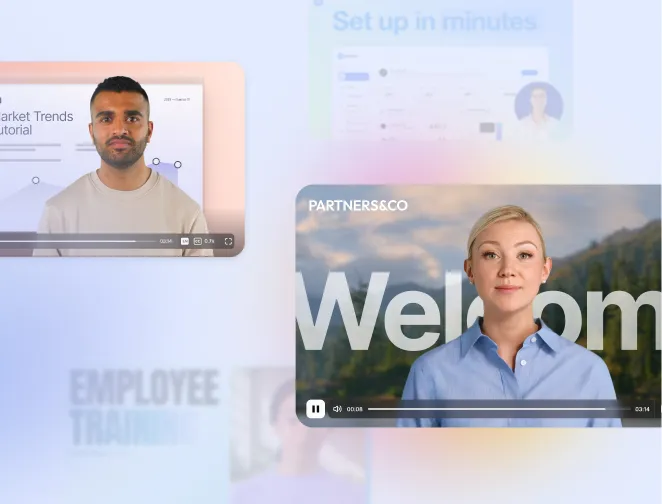
Create AI videos with 230+ avatars in 140+ languages.
Have you found yourself staring at your screen, needing to make an informational video, and feeling overwhelmed?
You're not alone! Most L&D teams struggle with where to start, which tools to use, and how to keep viewers engaged.
The good news is that with a clear plan and the latest AI tools, you can produce professional videos that get watched and drive results.
Before you start: Define your goals and audience
Here's something I've learned the hard way: jumping straight into video creation without a plan is like driving without a destination.
You might end up somewhere, but probably not where you intended.
Before you even think about recording, take a step back and clarify what you want viewers to understand or do after watching your video.
Research from Columbia's Center for Teaching and Learning shows that videos with clear, singular objectives see 40% better knowledge retention than those trying to cover everything at once.
So ask yourself:
- Who exactly is watching? Are they beginners or experts? Internal employees or external customers?
- What's the one thing they should learn? Not five things, not three things. One clear takeaway.
- How will you know it worked? Will they complete a task? Change a behavior? Pass a quiz?
Many creators tell me they jump straight to recording, then realize halfway through they're not sure who they're talking to or what action they want viewers to take.
Don't be that person. Spend 15 minutes defining these basics, and you'll save hours of confusion later.
Step #1: Choose your instructional video style to share your message
The first thing you need to do once you're ready to create an instructional video is to choose how you want your video to appear.
Ask yourself questions like:
- What is my budget? How much money do I want to spend creating an online course?
- How much time do I have?
- What do I want my video to look like? Do I need it to follow a specific brand style?
- Do I need to hire a video editor, or can I create my own?
Once you have answered these questions and have a more detailed assessment of your needs, you can choose the instructional video style that best suits you.
There are different ways of creating informational videos, but here I will elaborate on the four most popular and effective, so let's get started.
Animated videos
This style is ideal for explaining concepts or operations. It uses illustration to visually guide viewers and keep them attentive, making it easier for them to understand complex information.
If you want creative control, this may not be a fit unless you are an animation designer or savvy in animation software.
Videos featuring your employees
If you need to create a live-action informational video for, say, your company, you might consider using some of your employees as actors.
However, like it or not, the reality is that you may have a hard time finding willing employees since most people are camera-shy.
Traditional video production is also quite expensive.
Live-action videos with real actors
Who doesn't love those professional videos where real people tell a story? Thanks to the human factor, whether through an inspirational approach or laughter, it's easy to get hooked on these training videos.
However, creating such instructional videos takes time and a big budget that not everyone has.
AI instructional videos
Designing great instructional videos is child's play with AI video platforms. You don't need prior video editing experience or a recording studio.
Moreover, creating your own videos with AI is affordable and will help you save a tremendous amount of time, as they can be made in minutes.
For example, in less than a year, Maryville University saved 35% of time creating video lectures with AI avatars using Synthesia.
Which style should you choose?
After working with dozens of organizations on their video strategies, here's my practical guide for choosing:
- Choose animated if: You're explaining abstract concepts, need complete creative control, and have design resources or budget for animators
- Choose employee videos if: You're building internal culture, have willing participants, and want that authentic, informal training feel
- Choose professional actors if: You're creating external marketing content, have a substantial budget, and need brand-critical polish
- Choose AI if: You need speed and scale, want multiple languages, require frequent updates, or have limited budget
In my experience, most organizations start with AI videos for internal training and documentation because they can iterate quickly. Once you've validated the content works, you can invest in higher production if needed.
Step #2: Be clear about who is your target audience, what you want to say, and establish objectives
As much as you would like to be a filmmaker, an informational video is probably not the right place to show the world that you can be the next Stanley Kubrick.
People will click on your video expecting to learn as quickly and efficiently as possible, and for that to happen, you'll need to set clear objectives and keep the video short and sweet.
However, how can you ensure your videos don't become a three-hour documentary?
Always keep in mind who the video is for
Before starting to create videos, you need to define your audience. Knowing this will make it easier for you to communicate your ideas effectively in your explainer video.
Remember why you are making the video
We understand it's easy to talk for hours when you're passionate about something. However, it's important to stay on track and try not to ramble. The best explainer videos are always concise.
Don't lose sight of your goals
It's essential to have a clear learning objective. Try to keep the learning outcomes in mind throughout your video.
Step #3: Make sure your script is telling a story
Never underestimate the power of words. You can have the best visuals, sound effects, or graphics, but if your script is confusing, lengthy, or tedious, we can promise that your instructional video will not get results.
So, yes, a great script is an absolute must if you want to create a great instructional video; but how can you ensure great storytelling when you are not a published author?
Don't worry; writing a good script is easier than you think. We'll show you some tips and tricks, starting with the following AI video as an example.
- The first step starts just before writing the first line: Break down all the information you want to share.
- "Break the ice." Start your script by casually introducing yourself or your business like Professor Sergey Brink does in this video. Any video script is best when it sounds like a casual conversation.
- In one simple sentence, let them know what you will talk about: As in this video; you can introduce the topic by saying things like, "You will learn about..." "Today I'll talk about..."
- Give definitions in simple language. In this case, the professor talks about Newton's third law and manages to keep it painless.
- If possible, use situations from everyday life to exemplify your topic.
Ta-da! And just like that, you have a great script. Now it's time to convert that script to video.
You can also check out these tips for creating a great video script, or you can try out this tool that will generate script ideas for you when you're stuck.
Step #4: Choose the right design/template to create instructional videos
First impressions matter, and the visual design of your video can make or break how it’s perceived.
But if you’re not a designer, starting from a blank canvas can feel impossible.
That’s why I like using Synthesia’s ready-made templates.
They’re not just pretty — each one is structured around common video types like training, onboarding, or product explainers, so I can focus on the message instead of layout decisions.
Once I pick a template, I can adjust scenes, apply brand colours, and add or generate my own media in minutes.
It’s the fastest way I’ve found to create something that looks professional and on-brand without ever opening a design tool.

Focus on audio first: Quality matters more than you think
Here's something most people don't realize: audio quality impacts perceived professionalism more than video quality. You can have slightly grainy video and viewers will forgive you, but bad audio? They'll click away immediately.
Whether you're recording yourself or using AI voices, prioritize clear audio. Find a quiet environment, use a decent microphone if recording yourself, and maintain consistent volume throughout. For AI videos, preview different voice options and adjust the pacing to sound natural.
I always test audio on different devices. What sounds clear on my laptop might be muddy on a phone speaker, and guess where most of your viewers will be watching?
Step #5: Add interactive elements to boost engagement
Static videos are fine, but interactive elements can increase viewer information retention. Instead of viewers passively watching, they're actively participating, which transforms learning from consumption to engagement.
Consider adding these interactive elements to your informational videos:
- Branching paths for different viewer roles or experience levels
- Clickable buttons for downloading resources (checklists, PDFs) at relevant moments
- Knowledge checks between sections to reinforce key concepts
- Decision points like "Quick overview or detailed walkthrough?"
The key is placing these elements at natural break points in your content. Make your clickable targets large and high-contrast so they're easy to spot and click. Use action-oriented labels like "Download checklist" instead of vague "Click here" text.
Synthesia's interactive video features let you add these elements directly in the editor, turning a standard video into an engaging learning experience. I've seen completion rates jump by 40% just by adding simple quiz questions between sections.
Step #6: Share your instructional video with the world
You wrote a great script, and your video design is perfect, so why limit your audience?
Once my video is ready, I can translate it into 80+ languages with one click.
The platform automatically updates both voice and subtitles, so your message stays consistent across regions.
Make your video accessible and global
Research shows that captions improve comprehension by 30% across all learners, not just those with hearing impairments. Plus, many viewers watch videos muted initially, especially on mobile devices.
Here's how to maximize accessibility and reach:
- Always add captions (many platforms auto-generate these now)
- Export transcripts for searchability and SEO benefits
- Use high-contrast text that's readable on any background
- Avoid placing text at frame edges where it might get cut off
With an AI video platform, you can duplicate your project and switch the voice language in minutes rather than re-recording with different actors.
I've seen teams create 8-language versions of training content in a single afternoon. Synthesia's 1-click translation and multilingual video player make this process incredibly straightforward.
Step #7: Measure what works and iterate
Creating your video isn't the end of the journey. The real magic happens when you start tracking performance and making improvements based on actual viewer behavior.
Here's what to track:
- Completion rates: Are viewers watching to the end?
- Drop-off points: Where exactly are people leaving?
- Viewer feedback: What questions are they still asking?
- Behavior change: Are they actually doing what you taught?
I review analytics monthly for high-traffic videos.
If I see consistent drop-off at the same timestamp, that's my signal to simplify that section or break it into two videos. Sometimes a confusing 30-second segment can tank your entire video's effectiveness.
The beauty of AI-generated videos? You can update them in minutes. Found a typo? Script needs updating? Just edit and regenerate. No need to book a studio or recall your actors.
Why is an instructional video effective in education?
In the 21st century, it's hard to imagine a world without video tutorials or training videos to help us learn about different topics and develop new skills.
If you’ve ever chosen a quick tutorial over a long manual, you already know the power of video. But here’s why instructional videos are such an effective way to learn and teach.
Everyone learns at their own pace
With video, people can pause, replay, and watch as many times as they need. It gives learners control, so they can absorb information at the speed that works best for them.
It’s easier to keep people engaged
Videos combine visuals, sound, and storytelling — and when you add interactive elements like quizzes or clickable sections, attention and retention go way up.
Learning happens anywhere
Remote work isn’t going anywhere, and videos make it simple for teams to learn no matter where they are. All they need is a link.
You can teach in any language
Video makes localization easy. Translate your content into multiple languages so everyone gets the same learning experience — wherever they are.
Short videos suit modern attention spans
Let’s be honest — most of us have shorter attention spans than we’d like to admit. Bite-sized videos keep learners focused without overwhelming them.
It saves time and money
Once you’ve created your content, it’s easy to update, reuse, and scale across teams. Video training replaces repetitive live sessions and frees up time for higher-value work.
About the author
Strategic Advisor
Kevin Alster
Kevin Alster is a Strategic Advisor at Synthesia, where he helps global enterprises apply generative AI to improve learning, communication, and organizational performance. His work focuses on translating emerging technology into practical business solutions that scale.He brings over a decade of experience in education, learning design, and media innovation, having developed enterprise programs for organizations such as General Assembly, The School of The New York Times, and Sotheby’s Institute of Art. Kevin combines creative thinking with structured problem-solving to help companies build the capabilities they need to adapt and grow.

Frequently asked questions
How do I make an engaging informational video if I have no filming or editing experience?
Creating engaging informational videos without filming or editing experience is easier than ever with AI video platforms. You can start by choosing from pre-designed templates, writing a simple script that tells your story conversationally, and using AI avatars to deliver your content professionally. The key is focusing on your message and audience needs rather than technical production skills.
Modern AI tools handle the complex parts like video editing, voice generation, and visual effects automatically. This means you can create professional videos in minutes by simply typing your script, selecting visuals from built-in libraries, and clicking generate. The result looks like it was produced by a professional team, but requires zero technical expertise on your part.
What is the ideal length for an informational video to maximize viewer retention?
Research analyzing 6.9 million video watching sessions shows that videos under 6 minutes maintain nearly 100% viewer engagement, while videos over 12 minutes see engagement drop to just 20%. For maximum retention, aim for 3 to 5 minute videos that focus on a single topic or learning objective. This length gives you enough time to explain concepts thoroughly while respecting your viewers' attention spans.
Breaking longer topics into a series of shorter videos actually improves learning outcomes and completion rates. Viewers can digest information at their own pace, and you'll find it easier to update individual segments when information changes. This modular approach also makes your content more searchable and shareable, helping viewers find exactly what they need when they need it.
How should I script and structure an informational video to keep viewers engaged?
Start your script with a casual introduction that immediately tells viewers what they'll learn, then break your content into clear, digestible steps using everyday language. Structure your video with four key parts: a hook that grabs attention, an intro that speaks to viewer motivations, key topics presented as a story rather than a lecture, and a clear call to action. Keep your tone conversational, as if you're explaining something to a colleague over coffee.
The most engaging scripts use real-world examples and situations to illustrate concepts, making abstract ideas concrete and memorable. Write like you speak, using "you" to address viewers directly and keeping sentences short and punchy. Remember to focus on one main learning objective per video, and always explain not just what viewers should do, but why it matters to them.
How can I add captions and translate my informational video into multiple languages at scale?
AI video platforms now offer one-click translation that automatically converts both voice and captions into 80+ languages while maintaining perfect lip-sync with AI avatars. This means you can create your video once in your primary language, then instantly generate versions for global audiences without hiring translators or re-recording content. The AI handles both the translation and voice generation, ensuring your message stays consistent across all languages.
Adding captions improves comprehension by 30% for all viewers, not just those with hearing impairments, and many people watch videos muted on mobile devices. Modern platforms automatically generate accurate captions that you can edit if needed, and these captions translate along with your video content. This accessibility feature also boosts your video's searchability and helps viewers follow along in noisy environments or when learning complex topics.
Can I add quizzes, branching, and clickable resources to make my informational videos interactive in Synthesia?
Yes, Synthesia allows you to transform standard videos into interactive learning experiences by adding quizzes, branching paths, and clickable resources directly in the video editor. You can insert knowledge checks between sections, create decision points where viewers choose their learning path, and add downloadable resources like PDFs or checklists at relevant moments. These interactive elements can increase completion rates by up to 40% compared to passive video content.
The key to effective interactive videos is placing these elements at natural break points in your content, using clear, action-oriented labels like "Download checklist" instead of vague "Click here" text. You can create branching scenarios for different viewer roles or experience levels, letting beginners get more detailed explanations while advanced users skip to complex topics. This personalized approach transforms your informational video from a one-way broadcast into an engaging, two-way learning experience.

















